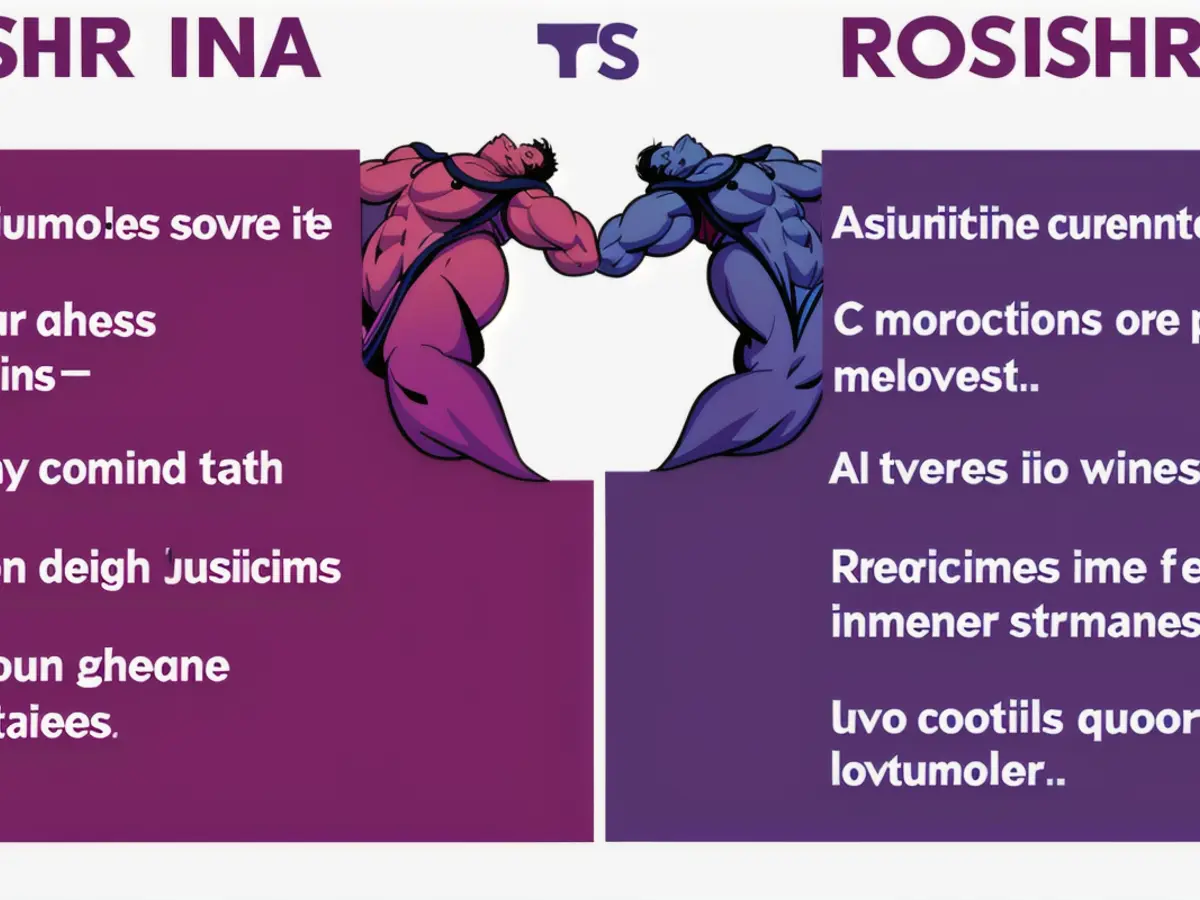IRA Variants: Understanding the Distinctions Between SEP and Roth
Choosing between a Simplified Employee Pension (SEP) IRA and a Roth IRA for retirement savings isn't a walk in the park. The SEP IRA offers business owners a substantial retirement savings fund with full control over contributions. On the other hand, a Roth IRA is a flexible retirement savings option for most people, with after-tax contributions and tax-free withdrawals.
Both choices have their advantages and disadvantages, so making an informed decision requires evaluating the pros and cons.
What is a SEP IRA?
What is a SEP IRA?
A SEP IRA is a retirement savings plan specifically designed for small business owners to help them provide retirement savings opportunities for themselves and their employees.
SEP stands for Simplified Employee Pension, and IRA is an abbreviation for Individual Retirement Account.
Like other IRAs, a SEP IRA belongs entirely to its account holder (employee), but unlike traditional IRAs, the employer is responsible for 100% of contributions to the account.
Employer
Taxable Income
Individual
Taxable income refers to the income subjected to taxation following deductions and exemptions. Business owners can contribute up to 25% of an employee's income, capping out at $69,000 in 2024 and $70,000 in 2025. However, the employer should contribute the same percentage of the employees' income to each employee's SEP IRA. If an employer contributes 25% to maximize their SEP IRA contribution, they must do the same for all employees.
Historically, SEP IRA contributions were always tax-deferred. When funded with pre-tax money, employees wouldn't have to pay any income tax on the contributions made by their employer. Plus, investments within the account remain untaxed. Nevertheless, withdrawals from a SEP IRA are subject to regular income tax since they're considered taxable income.
Yes
However, the Secure Act 2.0 introduces the option for Roth SEP IRAs. Roth SEP IRAs are funded with post-tax money, but withdrawals are tax-free.
No
Apart from contribution limits and taxation, some other rules govern SEP IRAs you should be aware of.
An employer may exclude an employee from SEP IRA contributions if they're under 21 or haven't worked for the company in the previous three out of five years. If an employee falls into these categories, the employer must contribute to their account.
Yes
Early withdrawals and Required Minimum Distributions
No
Early withdrawals before age 59 1/2 from a SEP IRA are subject to a 10% penalty, and SEP IRAs funded with pre-tax money are subject to required minimum distributions starting at age 73.
The SEP IRA is a simple retirement plan ideal for small businesses. A better option for individual business owners with no employees could be a Solo 401(k). There are several advantages to a Solo 401(k) compared to a SEP IRA.
Employers discretion until 21 years old and worked three of the last five years.
What is a Roth IRA?
Income must fall below limits set each year by the IRS.
What is a Roth IRA?
A Roth IRA is a retirement savings account available to most individuals with eligible income sources.
The lesser of 25% of compensation, or $69,000 (2024) and $70,000 (2025).
The primary difference between a Roth IRA and a traditional IRA is taxation. Unlike traditional or SEP IRAs, contributions to a Roth IRA are not tax-exempt. Instead, individuals pay taxes on the amount they put into a Roth IRA. However, their investments within the account grow tax-free. The benefit? Tax-free withdrawals.
$7,000, plus $1,000 catch-up contribution for each year if 50 or older in both 2024 and 2025.
An added advantage of a Roth IRA is its flexibility. You can withdraw your contributions at any time without penalties, even before reaching the age of 59 1/2 required for other retirement accounts. Moreover, you can take a penalty-free withdrawal of any amount converted from a traditional IRA, SEP IRA, 401(k), or other retirement account to a Roth IRA five years after the conversion. Roth IRAs' flexibility makes them an attractive choice for retirement savings.
Contribution limits and income limits
Yes
Individuals can contribute $7,000 in 2024 and 2025 to a Roth IRA. For those 50 or older, the contribution limit is $8,000 for both years. However, households with an adjusted gross income exceeding the Roth IRA income limits may have a lower contribution limit or no contribution eligibility at all.
Sometimes
Addressing this issue brings us to the backdoor Roth IRA. Individuals make a contribution to a traditional IRA and promptly convert that amount to a Roth IRA. Be aware of important nuances, but the process isn't as convoluted as it may appear.
Disadvantages of a Roth IRA
Yes (unless you have a Roth SEP IRA)
The biggest disadvantage of a Roth IRA is its relatively low contribution limit. While $7,000 may suffice for some, it pales in comparison to contribution limits for a 401(k) or SEP IRA. For those aiming to save substantially for retirement, they'll need more than a Roth IRA.
No
Differences between a SEP IRA and a Roth IRA
Key differences between a SEP IRA and a Roth IRA
- Contribution limits and taxation
- Withdrawal options
- Eligibility for contribution
- Flexibility and liquidity
| SMALL BUSINESS RETIREMENT PLAN | INDIVIDUAL RETIREMENT PLAN || --- | --- || Who funds the account? | Employer or Self-employed person | Individual || Are contributions tax-deductible? | Yes | No || Are withdrawals taxed? | Yes | No || Eligibility | Business has fewer than 100 employees and the employer chooses to offer it. Eligible until age 21 with 3 years of work experience. | Earned income below IRS-set annual limits. || Contribution limit | Up to 25% of compensation, or $69,000 (2024) and $70,000 (2025). | Up to $7,000, with a $1,000 catch-up contribution for those 50+ (2024 and 2025). || Penalty on early withdrawals | Yes (Employer and employee) | Sometimes (Employee) || Required minimum distributions | Yes (Employer and employee) (unless Roth SEP IRA) | No |
Is a Small Business Retirement Plan Better than an Individual Retirement Plan?
Is a Small Business Retirement Plan Better than an Individual Retirement Plan?
Whether a Small Business Retirement Plan (e.g., SEP IRA) is better than an Individual Retirement Plan (e.g., Roth IRA) depends on your situation.
Small Business Retirement Plans, such as SEP IRAs, are great for self-employed business owners and select big companies. The high contribution limit allows them to set aside a significant amount of money and defer taxes on those contributions. However, generating the same contribution percentage for employees may be costly. To avoid this, you could consider a Solo 401(k) as an alternative.
On the other hand, Individual Retirement Plans, like Roth IRAs, are simple to set up with no contribution restrictions from individual employers. They allow lower-income individuals to save money while deferring taxes in retirement. However, the contribution limit is much lower than small business retirement plans.
In some cases, it may make sense to use both types of retirement plans in the same year.
Small Business Retirement Plan vs. Individual Retirement Plan FAQs
Which is better, Small Business Retirement Plan or Individual Retirement Plan?
Whether a Small Business Retirement Plan or Individual Retirement Plan is better depends on your personal situation. Small Business Retirement Plans, like SEP IRAs, are great for minimizing taxes today and saving a lot for retirement. Individual Retirement Plans, like Roth IRAs, are fantastic for remaining flexible with your savings and minimizing taxes in retirement.
Why is an Individual Retirement Plan better than a Small Business Retirement Plan?
An Individual Retirement Plan could be better than a Small Business Retirement Plan for two reasons. First, it allows owners to withdraw their contributions and conversions without penalty before age 59 1/2. Second, withdrawals are tax-free, keeping taxes low during retirement.
What are the disadvantages of a Small Business Retirement Plan?
There are a few negatives to a Small Business Retirement Plan. First, employers must contribute the same percentage of compensation to each eligible employee, which means contributing a lot to their accounts requires contributing to employee accounts as well.
Second, there is no employee contribution option in a Small Business Retirement Plan like there is with a 401(k). Third, withdrawals before age 59 1/2 are subject to a 10% tax penalty on top of regular income tax.
Should I have a Roth IRA and a Small Business Retirement Plan?
You can have both a Roth IRA and a Small Business Retirement Plan (like a SEP IRA). The benefits of having both are diversifying the tax treatment of your retirement savings. However, high-income households may be unable to contribute to a Roth IRA in a tax-efficient manner if they already have money in a Small Business Retirement Plan. A 401(k) or Solo 401(k) could be a better option to combine with a Roth IRA for high-income households.
Our Website has a disclosure policy.
Based on the provided text, here are two sentences that contain the words 'finance', 'retirement', and 'money':
The SEP IRA offers business owners a substantial retirement savings fund with full control over contributions, providing a significant financial opportunity for retirement.
In evaluating the pros and cons of a SEP IRA vs. a Roth IRA for retirement savings, it's crucial to consider your individual financial situation and future income tax rates.




